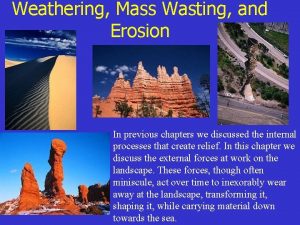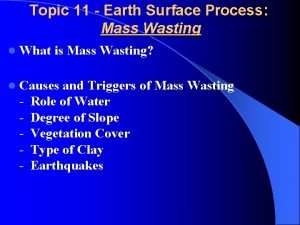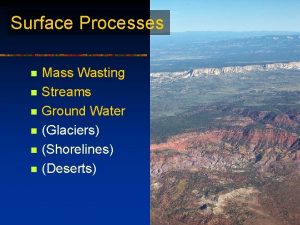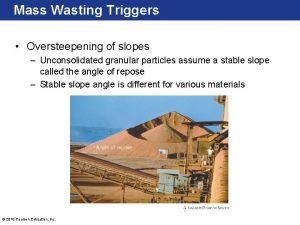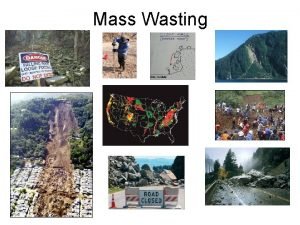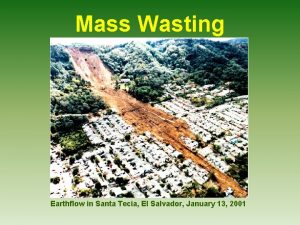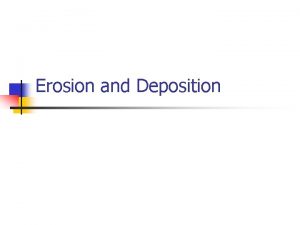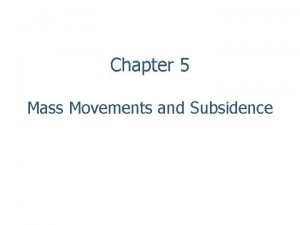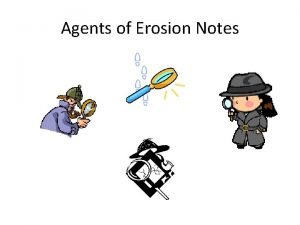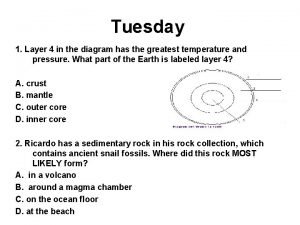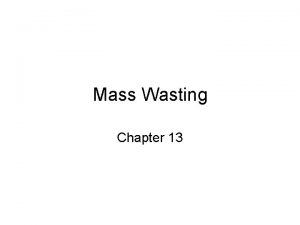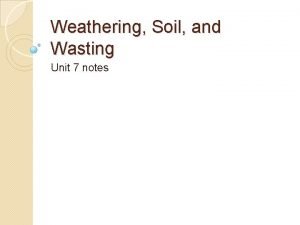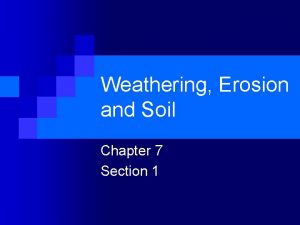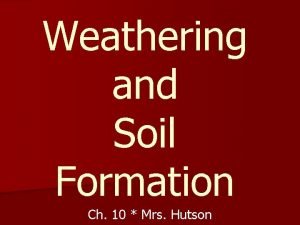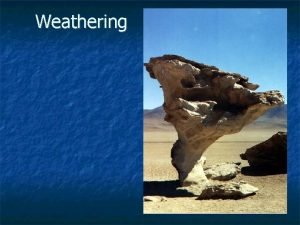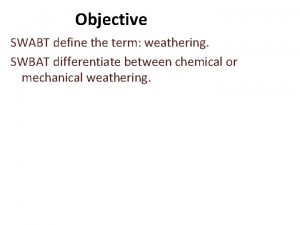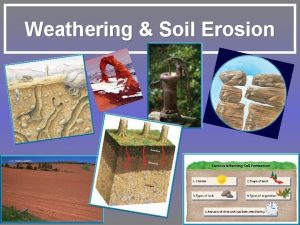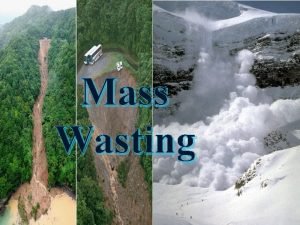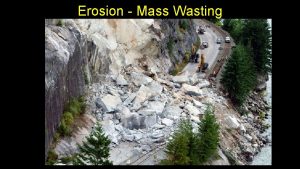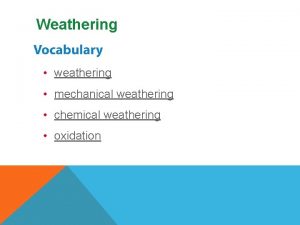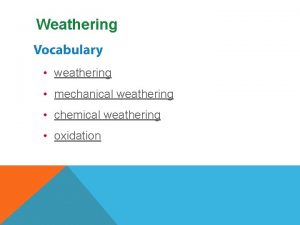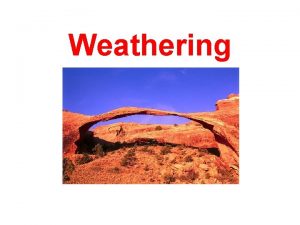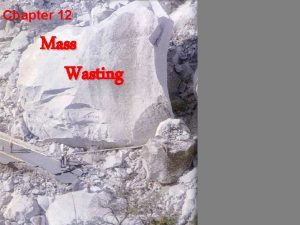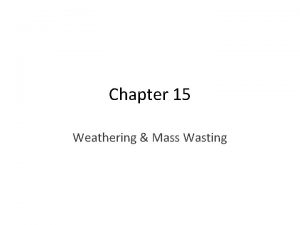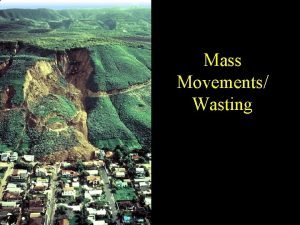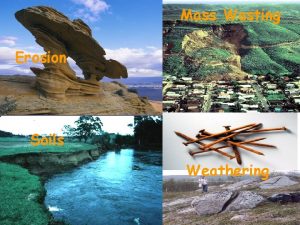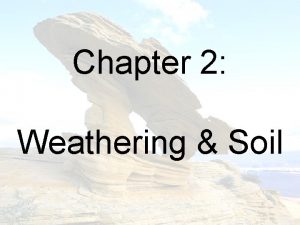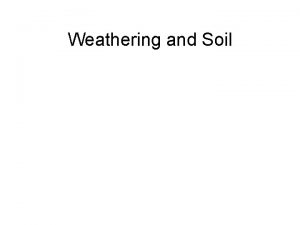Weathering Soil and Mass Wasting Chapter 4 Guided
















- Slides: 16

Weathering, Soil, and Mass Wasting Chapter 4: Guided Notes 1. 2. Print out in note form with 3 or 4 to a page. Do this by downloading Power. Point, opening it, clicking on File, clicking on Print What Handouts 3 to a page or 4 to a page (on a mac first click on pull down menu that gives option of powerpoint ) Use to guide your notes as you read, fill in and answer questions and add your own notes in the margins

Earth's external processes v. Weathering – __________________________ v. Mass wasting – the transfer of rock material downslope under the influence of gravity v. Erosion – the incorporation and transportation of material by _______________

Weathering v. Two kinds of weathering • Mechanical weathering • definition ___________ • Processes of mechanical weathering • ____ wedging: • Unloading: • ______ activity:

Explain this process Figure 4. 3

Explain this process Figure 4. 4 B

Weathering v Two kinds of weathering • Chemical weathering • Definition: ____________________________ • Most important agent is______ • Oxygen dissolved in water _____materials • Carbon dioxide (CO 2) dissolved in water forms _______and alters the material

Weathering v Two kinds of weathering • Chemical weathering • Weathering of granite • Weathering of potassium feldspar produces_______, soluble salt (potassium bicarbonate), and silica in solution • _____remains substantially unaltered • Weathering of silicate minerals produces insoluble iron oxides and clay minerals

Rates of weathering v Advanced mechanical weathering aids chemical weathering by___________ v Important factors • Rock characteristics • Mineral composition and solubility, as solubility increases, rate of weathering ________ • Physical features such as joints: as jointing increases, rate of weathering _____

Explain Figure 4. 2

Rates of weathering v Important factors • Climate • ______ and _____are the most crucial factors • Chemical weathering is most effective in areas of__________ • Mechanical weathering is most effective in areas of ___________

Rates of weathering v. Differential weathering • Caused by variations in__________ • Creates unusual and spectacular __________________ for example: ________

Explain this picture in terms of weathering Figure 4. 7 A

Soil v. An interface in the Earth system: explain: v. Soil is a combination of ______________, &________

What is this a pie chart of? Figure 4. 12

Soil v Soil texture and structure • Texture refers to the proportions of different particle sizes • Sand (large size) • Silt • ____(a mixture of all three sizes) is best suited for plant life

What is the name of a soil with 30% clay, 40% sand, 30% Silt? Figure 4. 13
 Mass wasting
Mass wasting Examples of mass movement
Examples of mass movement Mass wasting processes
Mass wasting processes Oversteepening
Oversteepening Mass wasting video
Mass wasting video Mass wasting _____.
Mass wasting _____. Mass wasting
Mass wasting Subsidence mass wasting
Subsidence mass wasting Mass wasting occurs when____.
Mass wasting occurs when____. Mass wasting
Mass wasting Mass wasting
Mass wasting Mass wasting
Mass wasting Chapter 7 weathering erosion and soil
Chapter 7 weathering erosion and soil Mechanical and chemical weathering venn diagram
Mechanical and chemical weathering venn diagram Types of chemical weathering
Types of chemical weathering Types of weathering
Types of weathering Weathering and soil erosion
Weathering and soil erosion
